by Shashikanth Heerekar | May 26, 2025 | Uncategorized
Learn effective methods to align with AI algorithms and boost how easily your content gets found in modern search engines.
“Optimizing for AI visibility” means making your online content super easy for smart AI systems (like Google’s AI Overviews or ChatGPT, Perplexity, Gemini, etc.) to find, understand, and use in their answers.
It’s important now because more people get information directly from AI summaries, not just by clicking traditional website links. If your content isn’t “AI-friendly,” it might get missed in this new way of searching.
This AI chatbot provides summaries of the topics and also provides you with the relevant sites, which have disclosed each and every thing in the article.
Optimizing for AI chatbot visibility means in simple way, your content or information should be aimed to cited by artificial intelligence (AI) systems, mostly the search engines like chatgpt, Gemini, etc.
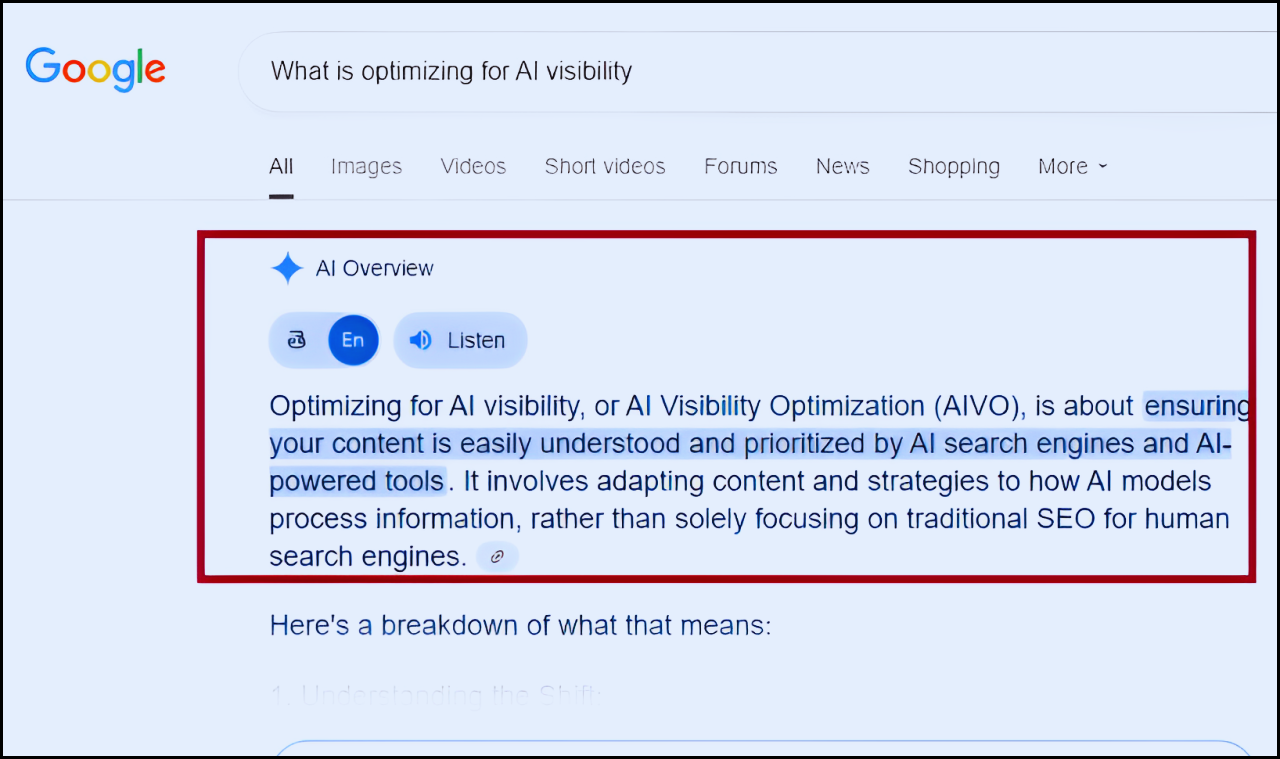
-
- Note: In the above image we can see Google AI Overview is integrated with Gemini.
In the above image you can notice how that AI overview is providing answers to the search query, whereas in the traditional way Google used to recommend us the website link for the search result, but now it has changed, so it is important for the content to be aimed at the Google chatbot.
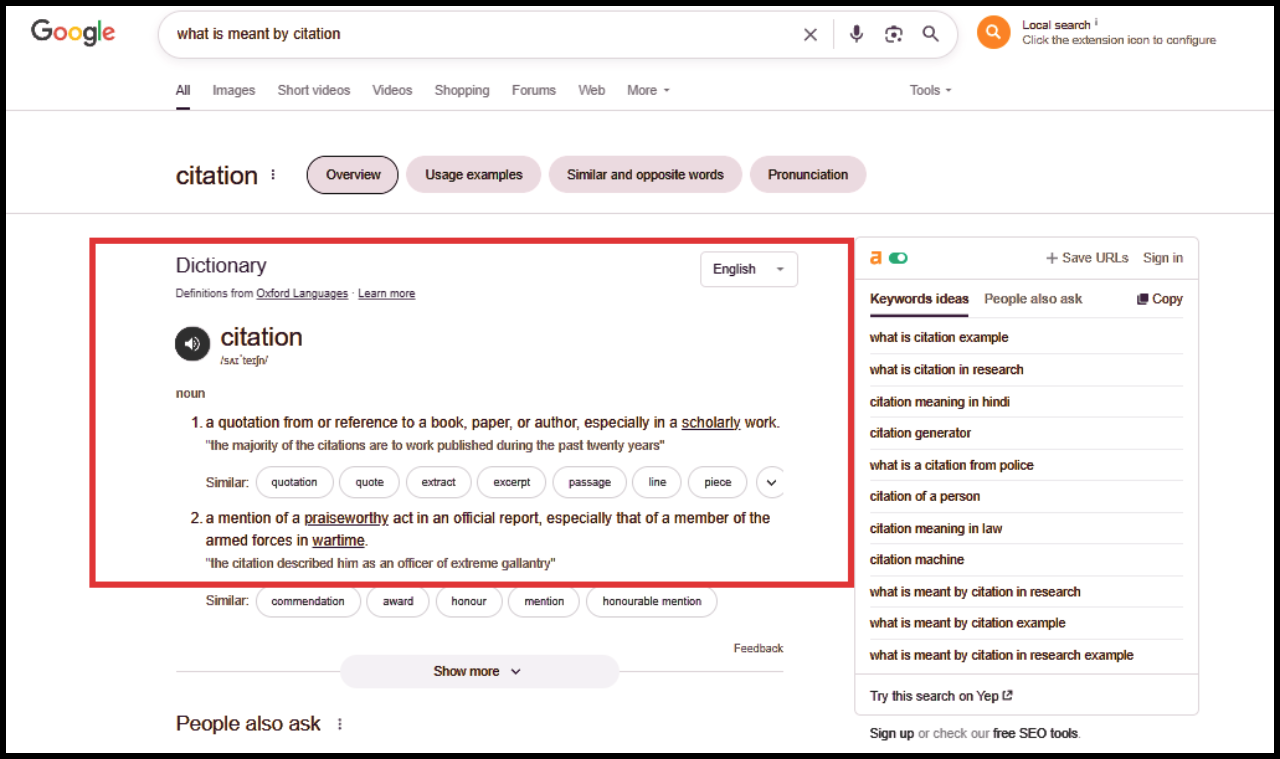
- Note: The above is the example of the traditional method. Where we can see there is not an AI overview.
Traditionally, websites used to have competition between them. Whoever’s content used to be informative or provide the latest updates, Google used to rank those website blogs at the top, but now Google is still doing the same but with little changes like providing AI overviews.
This AI chatbot will often summarize information from different websites and sometimes even telling you where it got that information and also redirect you to the website providing the latest and accurate information too.
Why AI Visibility Matters Now ?
In today’s digital landscape, AI visibility has become more critical and also more important than ever. With the rise of Generative AI Search and Search Generative Experience (SGE), content must also be crafted not just for the users but also for visible engines powered by AI (Gemini, ChatGPT, etc.)
Traditional SEO practices are now evolving and getting more advanced, as search engine optimization and AI SEO now prioritize context, relevance, and depth of content over mere keyword stuffing.
Understanding how to optimize for AI search is essential. Modern artificial intelligence engine optimization demands well-structured, insightful content that AI can interpret accurately. For example, a well-written blog with clear headings, rich context, and factual depth is more likely to appear in AI overviews generated by platforms like Google’s SGE (Search Generative Experience).
Now it is very crucial that your content be the latest and most accurate because more and more people will get answers directly from AI instead of clicking through many websites. If your information isn’t “AI-friendly,” you might get left out!
The Rise of AI Overviews and Generative AI Search
It is very important now to get listed in AI Overview because this AI chatbot is providing summarized answers to the query and providing the link to the website, so if the user is willing to learn more on that topic, they can directly click on that website. The below is the example of that topic.

The Rise of AI Overviews and Generative AI Search marks a major shift in how users discover and interact with online content. Powered by Large Language Models (LLMs) and Natural Language Processing (NLP), Generative AI Search is changing traditional search behavior by delivering more human-like, summarized responses—known as AI Overviews.
With the evolution of AI Overviews and also generative AI search engines, they are reshaping the digital landscape, offering users more unlearned and comprehensive search experiences. You want the AI to pick your website as a reliable source when it creates these summaries. The advanced models, like Large Language Models (LLMs), Natural Language Processing (NLP), and Natural Language Understanding (NLU), are leading to significant shifts in user behavior and content strategies.
Okay, let’s break down that example in super simple terms:
Imagine you’re trying to find a good place to eat with your family in Goa, specifically an Indian restaurant.
The “Old Way” of Searching (Before AI Overviews):
You’d type “best Indian restaurants families Goa” into Google. Google would then give you a long list of website links. You’d have to click on each one, read through menus, check reviews, and see if it’s family-friendly. It’s like being handed a giant phone book and told to find a restaurant.
The “New Way” with AI Overviews (What’s Happening Now):
You type the same question. But now, instead of just a list of links, Google’s AI (its super-smart computer brain) might give you a short, easy-to-read answer right at the top.
This answer might say something like:
“For family-friendly Indian restaurants in Goa, consider:
- Spice Route: Known for its diverse menu and kid-friendly atmosphere in Candolim.
- North Goa: Offers authentic North and South Indian food with the perfect local Goa touch.
- Goa Spice: Offers authentic local dishes and a spacious seating area perfect for groups near Panaji.
- The Curry House: A popular choice for its delicious curries and welcoming staff in Baga”.
So, from the above example, you can understand how the AI overview is providing you a summary guide instead of visiting each website for your query.
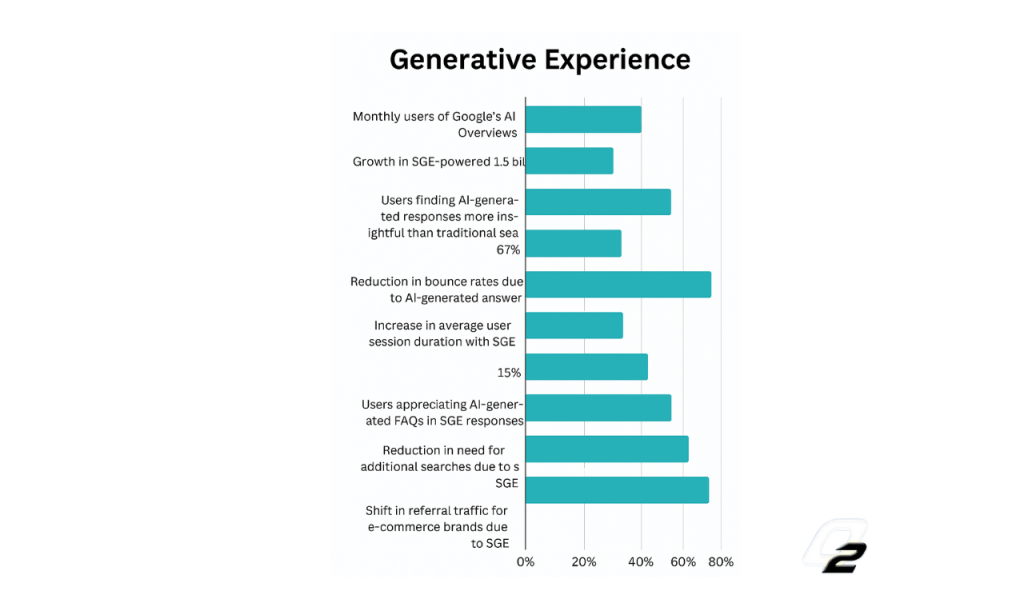
The above image shows how Google’s AI Overviews, powered by its Gemini AI platform, now serve over 1.5 billion users monthly, reflecting the increasing reliance on AI-generated search summaries—Source: Investopedia.
Growth in SGE-powered searches (QoQ) 35% – SEO Sandwitch
Users appreciating AI-generated FAQs in SGE responses 60% – SEO Sandwitch
Shift in referral traffic for e-commerce brands due to SGE 58% – Investopedia, SEO Sandwitch
How AI Models Process and Present Information
For developers or enthusiasts who want more control and privacy, it’s even possible to run ChatGPT locally, enabling them to use such AI capabilities without depending entirely on cloud services.
When you ask a question or type something in the feed, the AI uses something called Natural Language Processing (NLP). Think of this as the AI breaking down your words into tiny pieces and figuring out what each piece means.
Let’s assume you ask how to bake a cake with no eggs and milk. In the above query, you actually asked 3 questions for which this AI model will break down the entire sentence into single pieces and analyze each website answer and provide you with a summarized answer for your query in the AI overview, and it will also provide you with the external sources from where it gathered the information.
This is how this module works, it stores the information and later provides you with the summarized answer for you.
Here’s a simple example:
Let’s say you’ve got a long, detailed article—maybe 5,000 words—about a new type of electric car.
- Instead of you reading the whole thing, an AI like ChatGPT or Google’s Search Generative Experience (SGE) can quickly read it for you.
- It then summarizes that entire article into just a few short, easy-to-read bullet points. These bullet points will give you the main ideas and important facts without you having to spend a lot of time reading the original.
This way, AI saves you time and gives you direct, useful answers, making your online experience much smoother.
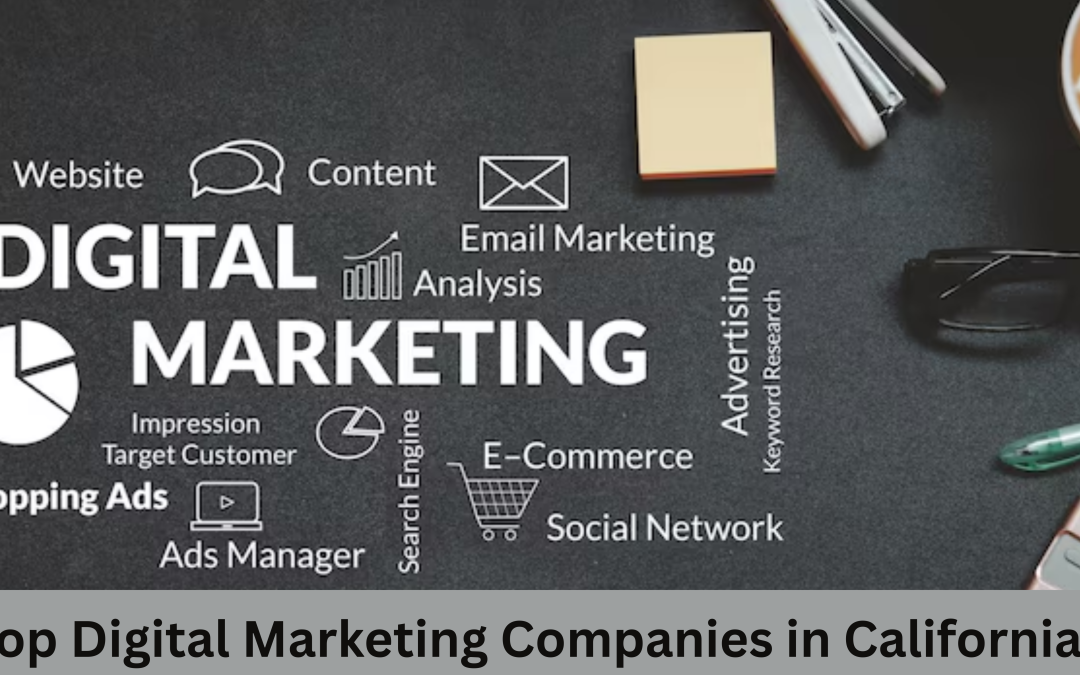
by Shashikanth Heerekar | May 17, 2025 | All Things about Marketing, SEO News
Explore top digital marketing services in California, including SEO, SMM, PPC, and content marketing from expert agencies in Los Angeles and San Diego.
Introduction: Understanding the Landscape of Digital Marketing in California
California is become a center for digital transformation and innovation. From Los Angeles to San Diego, businesses are embracing digital marketing strategies to stay competitive. As a business owner or marketing professional, you may have searched for terms like “marketing agencies near me” or “top digital marketing agencies in California” to find the best fit for your company. The Golden State is home to some of the most creative and data-driven digital marketing firms in the world.
With the rise of social media, content marketing, SEO, PPC, and branding, businesses in California need a comprehensive digital marketing strategy. Whether you are looking for a local marketing company in San Diego or a full-service digital marketing firm in Los Angeles, California offers endless possibilities.
A Summary of California’s Leading Digital Marketing Firms
When it comes to choosing the best digital marketing agency in California, several top names come to mind. Companies like those found on the list of “top 10 digital marketing agencies in Los Angeles” and “top advertising agencies in San Diego” are known for their innovation and results.
You’ll find agencies like:
- A leading digital marketing firm in San Diego known for its ROI-driven strategies.
- An award-winning social media agency in San Diego that helps brands go viral.
- A well-established marketing agency in Los Angeles that dominates search engine marketing.
These firms are well-known for providing branding, email marketing, PPC, SEO, and content production services.From top California digital marketing agencies to public relations firms in San Diego, businesses have a wide array of partners to choose from.
Best Digital Marketing Services Provided by California Agencies
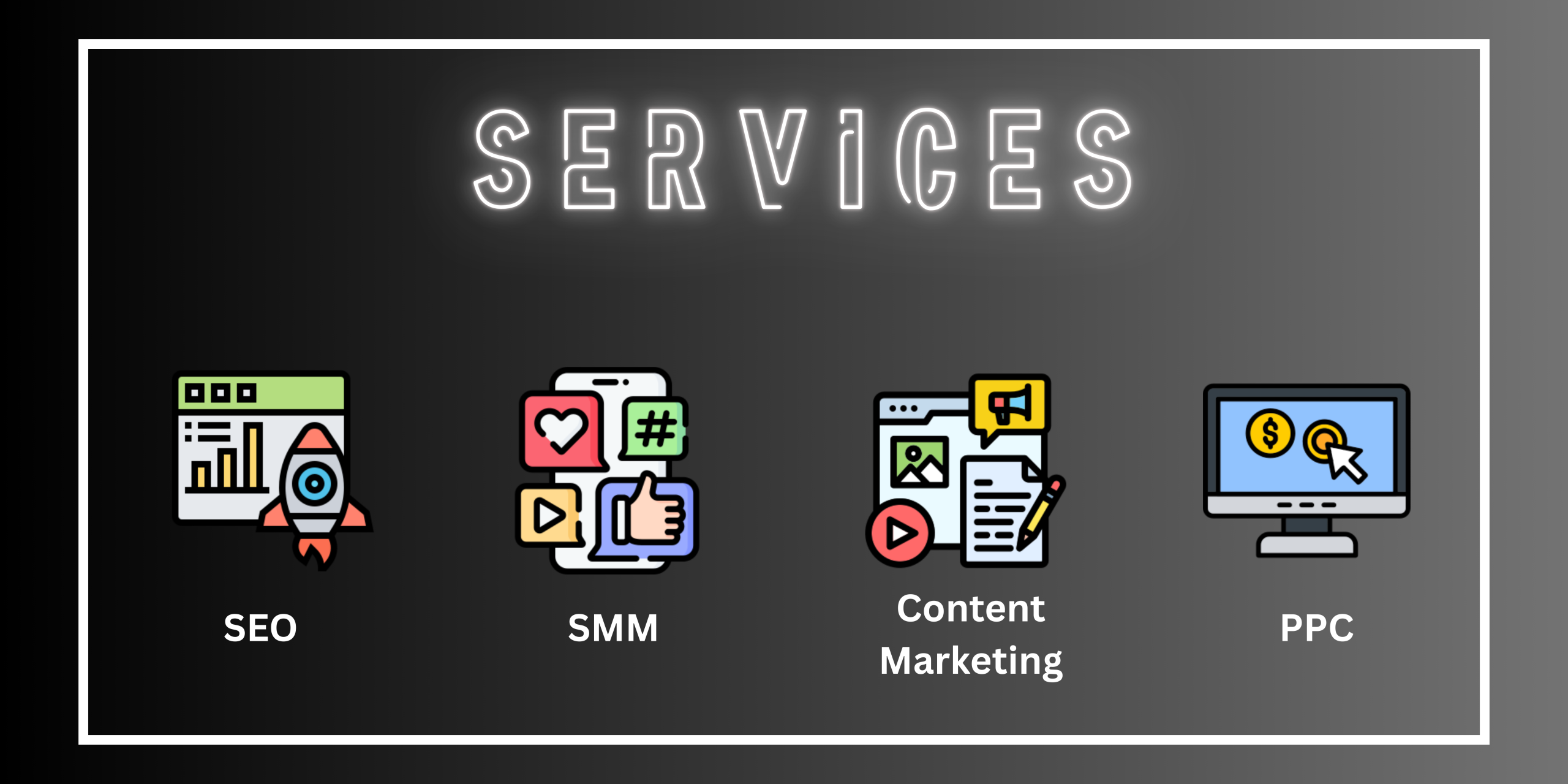
Search Engine Optimization (SEO)
Many digital marketing agencies in California offer expert SEO services to help businesses rank higher on search engines. From keyword research and on-page optimization to link building and technical SEO audits, Californian firms ensure your website appears on Google’s first page. Whether it’s a Los Angeles SEO company or a San Diego SEO firm, their goal is to drive organic traffic and improve visibility.
Social Media Marketing (SMM)
Social media agencies in California provide complete SMM services, including content creation, audience targeting, paid ads, and analytics. Platforms like Facebook, Instagram, LinkedIn, and Twitter are used to increase brand awareness and engagement. Whether you’re working with a social media marketing agency in San Diego or a Los Angeles digital agency, they tailor strategies to suit your business goals.
Content Marketing
Content marketing firms in California specialise in creating blogs, videos, infographics, and web copy that attract, engage, and convert audiences. These agencies use storytelling, SEO-driven content, and branded materials to build trust and authority. From a content writing agency in Los Angeles to a marketing company near me, you can expect customized content plans that align with your niche.
Pay-Per-Click (PPC) Campaigns
Top PPC agencies in California manage Google Ads, Bing Ads, and social media paid campaigns to get instant traffic and leads. They optimise ad copy, bids, and landing pages to ensure high ROI. Whether you hire a San Diego advertising company or a performance marketing agency in LA, they help you target the right audience and control ad spend effectively.
Evaluating the Success Metrics of Digital Marketing Agencies
ROI and Lead Generation
For any digital marketing agency in California, the ability to deliver ROI and generate quality leads is a top priority. Whether you’re hiring an internet marketing company in San Diego or a Los Angeles digital marketing agency, ask if they can show real growth in conversions, traffic, and sales. Look for data-backed performance like cost-per-lead improvements or revenue uplift from paid ads and SEO efforts.
Client Case Studies
Reputable California marketing firms often showcase detailed case studies. These real-life examples reveal how they solve problems and deliver measurable outcomes. Whether it’s a social media agency in San Diego or a content marketing agency in Los Angeles, their case studies should highlight strategies, tools used, and end results, like a 200% traffic boost or increased brand visibility.
Search Engine Rankings
If an agency claims to be the best, they should rank for high-intent keywords like “top digital marketing agency California” or “best SEO agency in Los Angeles”. Their SEO skills are demonstrated by a strong organic presence. Agencies not visible on the first page might not be the right fit for your business.
Client Retention Rates
The best digital marketing firms in California often maintain long-term relationships. Consistent performance and client satisfaction are indicated by a high retention rate. It also shows they provide ongoing value instead of just one-time campaigns. Before hiring, ask how long their average client stays with them.
Industry Reputation
Check if the agency is featured in directories like top marketing agencies US, advertising firms in San Diego, or digital marketing companies in Los Angeles. Peer recognition and industry trust are frequently associated with a solid reputation. Also, see if they publish KPIs, awards, or certifications on their website.
Note: Agencies like internet marketing agency San Diego or advertising firms San Diego often publish their KPIs and case studies online—always ask to review them.
How to Pick the Best Digital Marketing Firm for Your Company
Start by Defining Your Marketing Goals
Before searching for a digital marketing partner, it’s important to first understand what you want to achieve. Whether your goal is to increase website traffic, generate leads, drive sales, or improve brand visibility, clarity is key. This will help you filter options based on what each agency specializes in—some focus on performance marketing, while others excel at branding or content strategy.
Explore Local and Specialised Agencies
Once your goals are set, consider what type of agency fits your business. If you prefer hands-on communication and local expertise, search for a local marketing company near me. For businesses that need a complete suite of services, a top digital marketing agency near me might be the better fit. If your needs are industry-specific, like healthcare or SaaS, you should consider specialist marketing agencies that offer niche experience.
Check Reviews and Client Testimonials
Before signing with any agency, always do a credibility check. Go through reviews of marketing services near me on platforms like Google and Clutch. Positive feedback from past clients gives insight into the agency’s performance, communication, and professionalism. It’s also useful to see if they’ve worked with businesses similar to yours.
Request Consultations and Strategy Previews
Once you shortlist a few agencies, book consultation calls with digital marketing companies in Los Angeles or marketing firms in San Diego. During these sessions, ask them to share sample strategies, campaign timelines, and expected outcomes. A good agency will be transparent about its process and confident in its approach.
Evaluate Their Tools, Team, and Technology
A professional agency will rely on the latest tools like AI-powered analytics, automation software, and real-time dashboards to deliver results. Take time to learn about their internal team, skill sets, and project management workflow. The combination of the right tools and experienced marketers can make a big difference in campaign performance.
Case Studies: Success Stories from California’s Digital Marketing Powerhouses
Case Study 1: San Diego Retail Brand
A local fashion retailer partnered with a San Diego digital marketing company to improve their online visibility. By leveraging SEO, PPC, and social media, they increased their monthly revenue by 200% in six months.
Case Study 2: Los Angeles SaaS Startup
This startup teamed up with a Los Angeles internet marketing agency for lead generation. Through targeted email marketing and landing page optimisation, the startup reduced its customer acquisition cost by 40%.
Case Study 3: Fitness Brand in Orange County
A well-known fitness company used a California digital agency to scale their e-commerce. They utilized influencer marketing and Google Ads, leading to a 5x return on ad spend.
Note: You can find similar case studies on websites of top digital marketing firms and advertising agencies in Southern California.
Conclusion: Making Informed Decisions in Selecting a Digital Marketing Partner
Whether you’re looking for a local ad agency near me or one of the best marketing agencies in California, the key is to align with an agency that understands your vision. Use search queries like “top marketing agency near me” or “top advertising agency in California” to explore your options.
From San Diego advertising agencies to email marketing companies, Los Angeles, California, offers a wealth of top-tier partners. By focusing on your goals and researching, you’ll find a marketing agency in California that fits perfectly with your business.
Reminder: Always ask for a strategy presentation, references, and performance data before you sign a contract with any digital marketing company in California or a California marketing firm. Choosing wisely can make all the difference in your online growth journey.
Frequently Asked Questions
Q1. Which digital marketing services are most well-liked in California?
PPC advertising, content marketing, social media marketing (SMM), and SEO are the most sought-after digital marketing services in California. These services help businesses improve online visibility, drive traffic, and increase revenue.
Q2. How can SEO services from California agencies help my business?
SEO services from California firms can boost your website’s ranking on search engines like Google. By targeting the right keywords and optimising your site, you drive organic traffic and improve lead generation.
Q3. Do Californian marketing agencies offer customised social media strategies?
Yes, leading agencies in Los Angeles and San Diego design social media strategies tailored to each business. They focus on audience engagement, content planning, and platform-specific marketing to increase brand visibility.
Q4. Is PPC advertising effective for small businesses in California?
PPC services from California agencies are ideal for small businesses seeking quick results. With strategic ad placement and budget control, PPC helps generate targeted leads and boosts sales efficiently.
Q5. Why is content marketing important for online success?
Building trust, educating your audience, and bolstering your SEO approach are all accomplished through content marketing. Agencies create blog posts, videos, and infographics that attract traffic and convert readers into loyal customers.
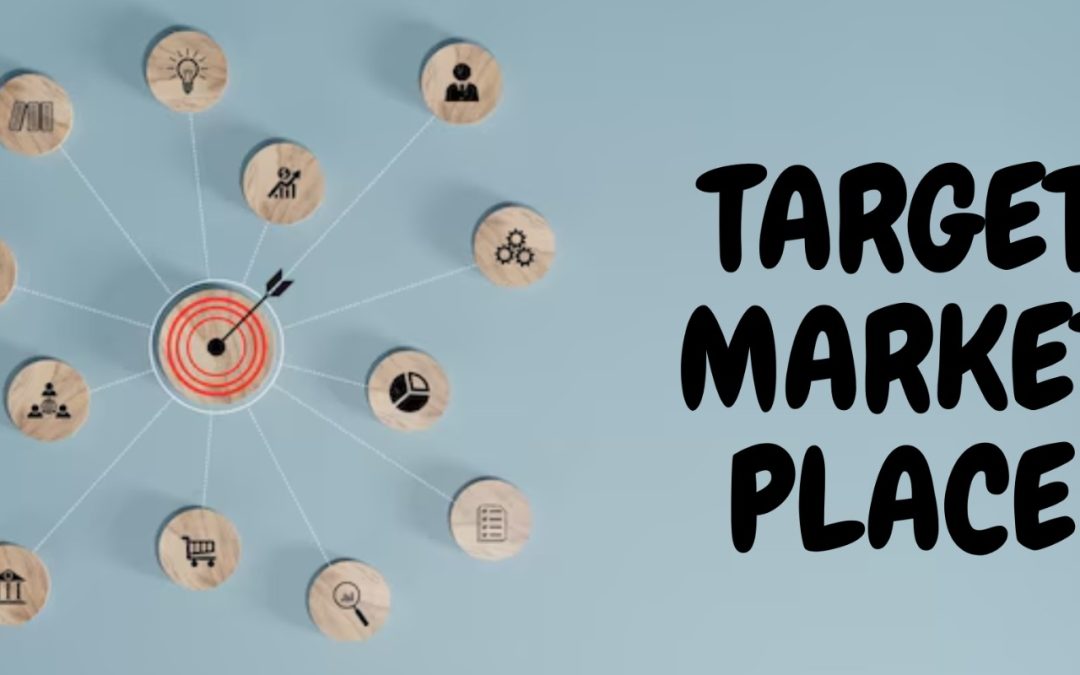
by Shashikanth Heerekar | May 17, 2025 | All Things about Marketing, SEO News
Discover how to succeed on Target Marketplace, from joining Target Plus to analyzing trends, defining your audience, and effectively selling online and in-store products.
Introduction
Understanding and navigating the Target Marketplace is essential for businesses aiming to expand their reach and enhance sales. In today’s rapidly evolving digital retail environment, platforms like Target.com Marketplace, Target Plus Marketplace, and the overall Target online marketplace provide sellers and brands with tremendous opportunities to connect with a wider audience.
With the rise of third-party sellers, businesses now have new pathways to success, leveraging marketplace visibility without needing a physical retail presence. This article includes everything from defining your target marketplace to tracking performance, using a structured and clear approach with stats, examples, and easy-to-read explanations.
Understanding the Role of Target Marketplace in Business
Success
The Target Marketplace, especially platforms like Target Plus, has become a significant player in online retail. It allows third-party sellers to list and sell products directly on Target.com, giving them access to millions of customers.
According to Statista, e-commerce sales in the U.S. reached over $1 trillion in 2023, with online marketplaces contributing to more than 50% of total online retail sales. This highlights how critical it is for businesses to understand how to sell on Target and sell on Target Marketplace and ultimately thrive within this digital retail ecosystem.
Many sellers wonder, “Does Target have third-party sellers?” Yes, it does. Through the Target Plus Marketplace, approved vendors can list Target Plus items and access the Target Plus portal to manage their business. Understanding how to get products into Target, become a Target vendor, and manage a Target seller account are important steps toward long-term marketplace success.
Defining Your Target Marketplace: Strategies for Identification
Before creating product listings or applications, businesses must clearly define their target marketplace. This means understanding which platform—physical locations like Stafford Marketplace Target, Camp Creek Marketplace Target, City Marketplace Target, or digital platforms like the Target online marketplace—best fits their product category and customer base.
For example, if you’re a brand selling eco-friendly cleaning products, your ideal marketplace might be the Target Plus Marketplace, where shoppers seek value, trust, and ethical choices. Using analytics tools to identify customer demographics, purchase behaviours, and competitive pricing can help sharpen your approach.
Location-based queries, such as Target at Camp Creek Marketplace, Target at Marketplace Blvd, or Target at Spring Valley Marketplace, often indicate buyer intent physically, while searches like Target seller central, Target Plus partner, and Target.com marketplace suggest interest in online selling.
Knowing where your customers are – whether at Tustin Marketplace Target, Target Corridor Marketplace, or searching for Target Marketplace near me – helps you choose the most suitable marketplace strategy.
Analysing Market Trends: The Importance of Research in
Targeting
Market research is fundamental when targeting a marketplace. Evaluating trends, product demands, competitor presence, and customer expectations is important.
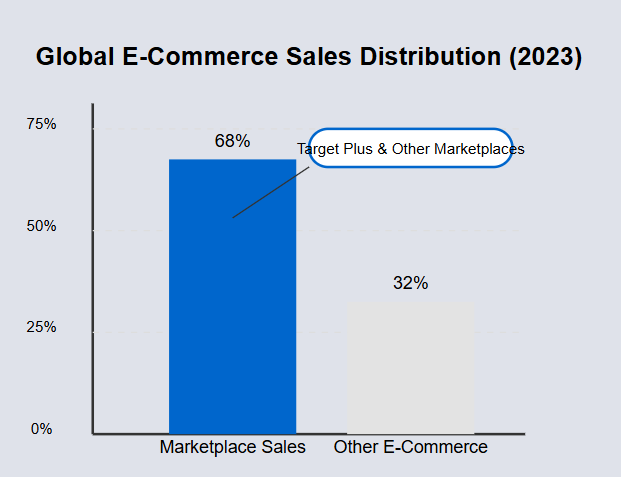
target marketplace
According to an eMarketer report, marketplace sales accounted for nearly 68% of all global e-commerce in 2023, emphasizing the power of platforms like Target Plus in shaping consumer behaviour.
For example, sellers should monitor trending keywords like how to sell on Target Marketplace, the Target Plus application, or how to get Target to sell their product to gauge growing interest. This research also helps understand a Target Plus item and why customers choose it, typically due to trust, fast shipping, and verified seller reputation.
When a business plans to sell products at Target or lists them on Target.com, analyzing what sells well in certain locations, such as Target International Marketplace or Marketplace Mall, and assessing online behaviour patterns like “Target on Marketplace” searches can uncover new opportunities.
Developing Customer Personas: Tailoring Objectives to Your
Target Marketplace
Creating detailed customer personas is essential for tailoring your sales and marketing strategies. These personas should include demographics, buying preferences, pain points, and channel preferences. A seller on the Target Plus Marketplace should ask: Who is my customer? Where are they shopping? Why would they buy my product?
For example, a skincare brand might discover that its target customer shops online via Target.com Marketplace, prefers clean ingredients, and values product reviews. This insight can drive content creation, pricing strategies, and listing optimization on the Target Plus portal or Target Seller Central.
Moreover, if local interest is strong, as indicated by search terms like Target Marketplace Blvd, City Marketplace Target, or Target Marketplace Drive, a hybrid approach of combining online listings with local in-store promotions could work well.
The goal is to match your product to the marketplace most aligned with your customer’s needs, whether that’s a physical location like Target Camp Creek Marketplace or digital platforms such as the Target Plus Seller system.
Effective Marketing Strategies for Engaging Your Target Audience
Once your marketplace and customer are identified, the next step is engagement. Marketing strategies must focus on reaching buyers at the right touchpoints. According to HubSpot’s State of Marketing Report 2023, personalized marketing campaigns are 80% more effective than generic ones.
On platforms like Target.com, sellers can optimize product pages with high-quality images, keyword-rich descriptions (e.g., “Target Plus Marketplace,” “sell on Target,” “Target Seller Account”), and customer-centric copy. For example, a seller listing on Target Marketplace Mall might add reviews, FAQs, and video demos to their page to increase engagement.
Using paid ads, influencers, and email campaigns targeting customers who shop at Target Stafford Marketplace, Camp Creek Marketplace Target, or browse Target Marketplace near me searches can also drive traffic.
For physical presence, geo-targeted advertising using local terms such as Target at the Marketplace, Target Corridor Marketplace, or Stafford Marketplace Target helps connect with nearby shoppers. Digital sellers can benefit from SEO strategies using terms like Target Plus Marketplace, how to get your product in Target, or the Target seller portal to boost visibility.
Measuring Success: Key Performance Indicators for Your Target
Marketplace
Tracking success in your Target Marketplace strategy involves defining the right metrics. Typical KPIs include conversion rates, average order value, customer acquisition cost, and return rate. For example, sellers on the Target Plus portal might track metrics like product page visits, number of Target Plus items sold, or click-through rate from search listings.
It’s also important to evaluate performance by location. A product might perform well in Target Spring Valley Marketplace, but not in Target City Marketplace, prompting you to adjust inventory or marketing efforts.
Online sellers should monitor analytics from Target Seller Central to refine pricing, improve descriptions, and optimize delivery timelines.
Searches like “how to sell product to Target“ or “how to sell your product in Target“ are rising, showing increased interest among vendors, but without tracking ROI, even the best product could underperform.
For example, a seller that launched a baby product line on the Target online marketplace noticed a 15% higher conversion rate after adding “eco-friendly“ and “hypoallergenic“ to product titles. Based on market trends and KPIs, this micro-adjustment made a measurable difference.
Conclusion
In conclusion, the Target Marketplace, including the Target Plus Marketplace, offers businesses an excellent opportunity to expand reach and grow sales, whether through physical locations like Target at Camp Creek Marketplace or digital platforms like Target.com Marketplace.
Companies can maximize their chances of success by defining the right marketplace, analyzing trends, building accurate customer personas, using data-driven marketing strategies, and tracking performance metrics.
Understanding how to sell on Target.com, get products into Target, and become a Target Plus seller are crucial steps in this process.
For example, many small brands that were once offline-only are now thriving as Target third-party sellers, leveraging digital tools, local visibility, and keyword optimization (like how to sell your product to Target) to reach national audiences.
Marketplace e-commerce is predicted to reach $8.8 trillion worldwide by 2025, so now is the moment to take action. Sellers who invest in understanding how to sell on Target Marketplace, align with Target Plus standards, and position themselves with clarity will be best equipped to succeed in this growing ecosystem.
Whether you’re listing on Target Marketplace Drive, selling through Target Plus, or managing products via the Target seller portal, it begins with a well-researched, clearly defined strategy for your target marketplace.
FAQS
1. What is the Target Marketplace?
A. The Target Marketplace refers to Target’s online and physical platforms where products are sold. This includes Target.com and Target Plus Marketplace, where third-party sellers can list their items alongside Target’s inventory.
2. Does Target allow third-party sellers?
A. Yes, Target works with third-party sellers through the Target Plus program. Approved vendors can list their items on Target.com and manage sales through the Target Seller Portal.
3. What are Target Plus items?
A. The term “Target Plus items” refers to goods sold by approved third-party vendors who are members of Target’s Plus program. These products often meet high standards in quality, customer service, and delivery speed.
4. What kind of support does Target provide to sellers?
A. Target offers tools and dashboards through the Target Plus portal to help manage your business. However, the seller or their partners must handle onboarding, inventory, and fulfilment.
5. What types of products are accepted in Target Plus?
A. Target typically accepts products that align with its brand values, including home goods, health and beauty products, baby products, and lifestyle items. Products must also meet performance and quality criteria to be sold as Target Plus items.
by Shashikanth Heerekar | May 16, 2025 | Uncategorized
Understand why choosing the right SEO company is crucial for downtown Houston real estate. Learn key factors to consider and what makes a top-tier SEO provider in this competitive market.
Introduction
In today’s digital-first property market, SEO for real estate in Houston is no longer optional—it’s essential. With more than 90% of homebuyers beginning their search online, visibility in search engine results pages (SERPS) is directly tied to success. In Downtown Houston, where real estate competition is intense and the market is fast-moving, having your business listed on Page 1 of Google is a strategic advantage.
Why Real Estate SEO is Crucial for Downtown Houston Agencies
In the hyper-competitive downtown Houston real estate world, simply listing properties and hoping for the best is no longer viable. To truly thrive and capture the attention of discerning buyers and sellers, a robust Real Estate SEO (Search Engine Optimisation) strategy is not just beneficial—it’s crucial for agencies operating in this dynamic market. Here’s why:
Significantly Boosts Organic Traffic to Your Property Listings and Blog:
Consider it: where do most people start searching for a new home or an agent to sell their property? The internet, and overwhelmingly, through search engines like Google. Effective SEO for Houston real estate ensures that when potential clients search for terms like “luxury condos downtown Houston,” “lofts for sale in the Houston Theater District,“ or even informational queries like “downtown Houston real estate market trends,“ your property listings and insightful blog content are prominently displayed in the organic search results. This means a consistent stream of highly qualified traffic to your website—users actively looking for what you offer.
Strategically Position Your Brand as a Market Leader in Houston Real Estate
Consistent, high-quality content that ranks well for relevant downtown Houston real estate keywords establishes your agency as a knowledgeable and authoritative voice in the local market. You build trust and credibility with potential clients by providing valuable information, expert advice, and showcasing your expertise in navigating the intricacies of Houston’s downtown property scene. This positions your brand as a go-to resource, making you the natural choice when they are ready to buy, sell, or rent.
Dramatically Improves Local Search Visibility (e.g., Appearing Prominently in Google Maps Results)
For real estate, local is everything. Buyers often search for properties and agents within specific neighbourhoods. Local SEO for Houston real estate ensures that your agency appears prominently in local search results, including the coveted Google Maps results. When someone searches for “real estate agent near me downtown Houston,“ you want your agency to be one of the first they see. This increased visibility makes it easier for local clients to find you, visit your office, or explore your listings.
Generates Consistent Inbound Leads Without Solely Relying on Expensive Paid Advertising
While paid advertising can quickly boost visibility, it requires continuous financial investment. Effective real estate SEO is a long-term strategy that builds a sustainable pipeline of inbound leads—potential clients who find you organically through their search queries. This reduces your reliance on costly ad campaigns and delivers a higher return on investment over time by attracting motivated leads actively seeking your services.
Understanding Real Estate SEO: Key Strategies for Success in the Houston Market
Unlike traditional SEO, which often casts a wide net with broader keywords, real estate SEO demands a laser focus, particularly within a localized and niche-specific market like Houston. Generic SEO tactics won’t cut it to effectively reach potential buyers and sellers in this sprawling metropolis. Real estate SEO in Houston thrives by targeting hyperlocal search terms—think specific neighbourhoods and communities—and understanding the distinct buyer intent keywords that signal a user’s position in the property journey.
Local Keyword Optimization: Pinpointing Your Houston Audience
The foundation of successful Houston real estate SEO lies in identifying and strategically using geo-targeted keywords. These phrases connect you directly with individuals searching for properties or real estate services in specific areas. Examples include:
- Downtown Houston condos for sale: Targeting those interested in urban living.
- Luxury apartments in Midtown Houston: Appealing to a specific rental market segment.
- Best real estate SEO company in Downtown Houston: If you’re targeting other real estate businesses.
- Consider also including terms like “[Neighbourhood Name] real estate agent,” “[Neighbourhood Name] open houses,“ or “[Neighbourhood Name] property management.”
On-Page SEO for Real Estate Websites: Optimising Your Digital Shopfront
Your website’s structure and content need to be finely tuned to attract both users and search engines:
Optimizing title tags and meta descriptions:
These are your website’s snippets in search results. Use compelling language and incorporate Houston-specific keywords to entice clicks (e.g., “Luxury Condos in Downtown Houston – See Listings Now!”).
- Structuring H1, H2, and H3 headings with relevant keywords: Use headings to organize your content logically and include keywords to help search engines understand the topic of each section. For example, an H2 could be “Benefits of Living in Downtown Houston.”
- Adding alt-text to property images: Describe your photos using relevant keywords (e.g., “Modern kitchen with stainless steel appliances in downtown Houston condo”). This helps search engines understand the visual content.
- Creating internal links between listings, blog posts, and service pages helps users navigate your site and distributes link equity, improving the visibility of important pages. For instance, you could link related property listings to blog posts about the neighborhood.
High-Quality Content Creation: Becoming Houston’s Real Estate Resource
Providing valuable, in-depth content establishes you as an expert and attracts organic traffic. Develop blog articles that cater to the needs and interests of your Houston audience, such as:
- “Best Townhomes in Downtown Houston Under $500K”: Targeting a specific budget and property type.
- “Why Houston is a Top Real Estate Investment Destination”: Attracting investors with market insights.
- Consider articles on neighbourhood guides, school district information, tips for first-time homebuyers in Houston, or market trend analyses specific to Houston areas.
Google Business Profile and Map Pack Optimisation: Dominating Local Houston Search
Your Google Business Profile (GBP) is crucial for showing up in local map results and attracting nearby clients. Real estate agencies in Houston must:
- Verify and update NAP (Name, Address, Phone): Ensure this information is accurate and consistent across all online platforms.
- Upload high-resolution photos: Showcase your office, team, and featured properties.
- Encourage client reviews with targeted keywords: Prompt satisfied Houston clients to leave reviews mentioning specific neighbourhoods or aspects of your service. (Stat: Online reviews act as powerful social proof; businesses with more positive and recent reviews often see a significant increase in click-through rates from local search results.)
Mobile and Speed Optimization: Delivering a Seamless Houston User Experience
In today’s mobile-first world, a fast, mobile-optimized website is non-negotiable, especially for Houston real estate, where many searches happen on the go. Real estate users expect:
- High performance: Pages load quickly, especially when browsing numerous property listings. (Stat: Studies show that a delay of just one second in page load time can decrease conversion rates by up to 7%.)
- Quick-loading pages: Optimise images and website code to ensure fast loading times on all devices.
- Mobile-friendly design: Ensure your website is responsive and easy to navigate on smartphones and tablets, with clear calls to action and easy-to-use search filters.
Evaluating SEO Companies: What to Look for in a Downtown Houston Firm
Choosing the right real estate SEO company in Houston can make or break your online strategy. Here’s how to vet a prospective firm:
Industry-Specific Experience
Does the agency specialize in real estate? Look for companies that have:
- Ranked IDX-enabled websites
- Generated organic traffic for realtors and brokers
- Delivered leads in competitive local markets like Houston
Knowledge of the Local Houston Market
Familiarity with neighbourhoods like Midtown, Eado, and the Heights is crucial. A top-tier firm will know:
- Local buyer personas
- Neighbourhood search trends
- School zone preferences and commute times
Transparent Reporting & Metrics
The best SEO companies provide detailed analytics reports including:
- Organic traffic growth
- Keyword position changes
- Bounce rate improvements
Customized SEO Strategy
Avoid cookie-cutter solutions. A great agency will develop:
- A content roadmap focused on Houston neighbourhoods
- A technical SEO checklist specific to your website structure
- A link-building strategy with local relevance
Top Benefits of Hiring a Specialized Real Estate SEO Company
Partnering with Downtown Houston’s best real estate SEO company offers several advantages.
Increased Search Visibility
Ranking higher for searches like “real estate agents Downtown Houston“ brings more relevant traffic and qualified leads.
Better Lead Conversion Rates
Optimized pages and user experience lead to longer site visits, more contact form submissions, and better conversion metrics.
Competitive Advantage in Local SERPS
With so many realtors operating in Houston, high-quality SEO separates your business.
More Referrals and Reputation Management
SEO agencies often assist with review management, ensuring your business stands out in Google, Yelp, and Zillow reviews.
Common SEO Challenges for Real Estate Businesses in Houston
Despite the benefits, there are several hurdles to effective real estate SEO in Houston.
High Competition in Downtown Houston
Downtown listings are premium, meaning competition for SEO keywords like “Downtown Houston real estate agent“ is fierce. Standing out requires a highly strategic approach.
Frequent MLS Data Updates
Maintaining SEO integrity across a dynamic website can be challenging with constantly changing listings.
Duplicate Content Risks
If multiple real estate agents use the same property descriptions or MLS data, duplicate content can create issues that hurt rankings.
Lack of In-House SEO Expertise
Many agencies don’t have full-time SEO staff, making it difficult to stay consistent and strategic without outside help.
Case Studies: Success Stories from Houston’s Leading Real Estate SEO Companies
Case Study 1: Midtown Realtor Increases Organic Traffic by 325%
A solo agent specializing in Midtown hired a local SEO agency that:
- Created weekly blog posts targeting “Midtown Houston condos”
- Built citations on real estate directories and Houston blogs
- Optimized Google Business Profile with 5-star reviews
Result: 325% increase in organic traffic and 3x more qualified leads.
Case Study 2: Eado Brokerage Dominates Google Maps Pack
A boutique brokerage struggled to get listed in the Google 3-Pack. The SEO company:
- Verified and optimized GBP
- Added location-rich service pages
- Launched a review generation campaign
Result: 1st page ranking for “Eado real estate agents“ and a 40% increase in calls from Maps.
Conclusion
When looking for the best real estate SEO company in Downtown Houston, prioritize:
- Local market knowledge
- Proven SEO results
- Custom strategy development
- Transparency and communication
A reliable partner will align your SEO strategy with Houston’s unique housing trends, helping you rise above competitors, generate more leads, and establish long-term dominance in SERPS.
Faq’s
1. What is real estate SEO, and how does it help my Houston agency?
Real estate SEO is the process of optimising your website and content to rank higher on search engines like Google. For agencies in Downtown Houston, it helps attract more qualified local leads by improving visibility for searches like “Downtown Houston condos“ or “best realtor in Houston.”
2. How long does it take to see SEO results for a real estate website?
SEO is a long-term strategy. Typically, you’ll start seeing improvements within 3 to 6 months, but significant results like top-page rankings in Houston may take 6 to 12 months, depending on competition and your website’s current state.
3. Why should I hire a specialised real estate SEO company in Downtown Houston?
A local, specialised SEO company understands Houston’s housing market, neighbourhoods, buyer behaviour, and competitive keywords. This local expertise helps generate faster, more targeted results compared to generic SEO services.
4. What keywords should my real estate business target?
Focus on a mix of geo-targeted and long-tail keywords like: \ n- Downtown Houston real estate agents- Luxury apartments in Midtown Houston- Buy townhomes in Eado Houston- Houston real estate SEO experts.
5. How much does real estate SEO cost in Houston?
Costs vary based on the scope and competition. On average, monthly SEO services in Houston range from $750 to $3,000+. High-quality agencies provide detailed reports, strategic planning, and ROI tracking to justify the investment.

by Shashikanth Heerekar | May 16, 2025 | SEO News
Understand the process of SEO, from keywords to rankings, and how it helps Houston businesses dominate online searches.
Introduction: Understanding SEO in the Houston Market
Houston isn’t just big; it’s a dynamic hub where businesses are constantly vying for attention. In this fast-paced environment, simply having a website isn’t enough – you must be easily discoverable. That’s precisely where the power of SEO (Search Engine Optimisation) steps in. Think of it as ensuring your digital storefront stands out on the busiest street.
SEO is all about fine-tuning your website so that search engines, especially the all-important Google, rank it higher when people are searching for relevant terms. And for businesses right here in Houston, local SEO is crucial. It’s about connecting with the customers in your neighbourhood, the ones actively looking for what you offer.
What Makes Houston’s Digital Market Unique
Houston’s diverse population, sprawling geography, and wide range of industries make it a truly unique landscape for digital marketing. Unlike more homogenous markets, Houston presents a fascinating mix of needs and competitive intensities across its various sectors.
For instance, the SEO strategies that work for a major oil and gas company in Houston might be vastly different from those needed by a local restaurant in Houston aiming to attract nearby diners, or a real estate firm in Houston looking to connect with potential homebuyers in specific neighbourhoods.
Understanding these nuances is crucial, as a one-size-fits-all approach to SEO in Houston won’t cut it. Each industry demands a tailored strategy that considers its specific audience, their online search behaviour, and the local competitive environment. This is where a deep understanding of local SEO and industry-specific SEO practices for Houston businesses becomes invaluable.
Why SEO Is Crucial for Houston-Based Businesses
Over 90% of people use Google to search for local services. If your business doesn’t appear on the first page, you might miss out on many potential customers.

Overview of Local vs. Traditional SEO
Overview of Local vs. Traditional SEO. While the broader scope of traditional SEO aims for general rankings across a wider audience, local SEO takes a more targeted approach, specifically focusing on geographic keywords. Think about the difference: someone searching for “best running shoes” engages with traditional SEO, while someone typing “best dentist in Houston” or “Houston coffee shop near me” is firmly in the realm of local SEO.
This localized approach recognizes the importance of proximity and local intent. Beyond just keywords, local SEO for Houston businesses also encompasses crucial elements like Google Maps optimization, ensuring your business appears prominently in local search results and map listings.
Furthermore, customer reviews play a vital role in local visibility and trust, directly impacting whether a potential Houston customer chooses your business over a competitor.Ignoring these local-specific factors can significantly hinder your ability to connect with your target audience in Houston.
The Fundamentals of SEO
Before we discuss the nitty-gritty of Houston SEO strategies, it’s wise to step back and understand the engine that drives it all: search engines like Google. Think of them as the librarians of the internet, constantly sorting through a massive collection of information to deliver the most helpful answers to your queries. So, how exactly do they decide which websites get the top spots? Let’s take a look under the hood.
How Google Ranks Websites:
Google’s ranking system isn’t based on magic; complex algorithms drive it – a set of rules and calculations designed to determine which websites are the most relevant and trustworthy for any search query. While the exact recipe is a closely guarded secret, we know some of the key ingredients. These include:
Keyword Usage
This is still fundamental. When someone searches for “SEO services Houston,” Google looks for websites that naturally and comprehensively use these and related terms in their content. However, it’s crucial to remember that quality and context are key – simply stuffing keywords won’t cut it.
Site Speed:
No one likes a slow website in today’s fast-paced digital world. Google knows this, and a website that loads quickly provides a better user experience, thus earning a ranking boost. Think of it—would you rather wait ages for a page to load or instantly get the necessary information?
Mobile-Friendliness:
A significant portion of searches happen on smartphones (especially for local searches in Houston when people are on the go), so having a website that looks and functions flawlessly on mobile devices is non-negotiable—Google prioritizes mobile-friendly sites in its rankings.
Backlinks:
Imagine other acceptable websites confirming your content and linking to it. These “backlinks” are like votes of confidence in Google’s eyes, signalling that your website is a credible source of information. High-quality backlinks from other Houston-based businesses or relevant industry websites can significantly boost your off-page SEO.
User Behaviour:
How users interact with your website also sends signals to Google. Do they quickly leave (bounce rate)? Or do they spend time exploring your content? Positive user engagement suggests your website is providing value.
The Role of Crawling, Indexing, and Ranking: How Information Gets Organized
Think of the internet as a vast, ever-expanding library. How does Google keep track of all the books (web pages)? It uses automated programs called “crawlers” or “bots” (like Googlebot) that act as tireless librarians, constantly exploring the web, following links from one page to another.
Alright, let’s flesh out the sections on Organic vs. Paid Search and the Unique SEO Landscape in Houston:
Understanding Organic vs. Paid Search:
You have two main avenues for getting your Houston business noticed in search engine results: organic search and paid search. While both aim to increase your visibility, they operate on fundamentally different principles.
Organic search results are “earned” placements that emerge based on how effectively your website’s SEO matches search engine ranking criteria. Think of it as earning your spot through hard work, providing valuable content, and having a well-optimized website. These listings appear naturally below any paid advertisements.
Paid search results are advertisements businesses pay to appear at the top or bottom of search results pages. Platforms like Google Ads allow you to bid on specific keywords, and when someone searches for those terms in Houston or elsewhere, your ad can appear.
The Unique SEO Landscape in Houston: Navigating a City of Scale and Opportunity
Houston, one of the largest and most dynamic cities in the United States, presents a distinctive set of challenges and exciting opportunities for businesses looking to thrive online through SEO. It’s not just about applying general SEO best practices; understanding the nuances of the Houston market is key to success.
Competition Among Local Businesses in Houston: Standing Out in a Crowd
With over 100,000 small businesses calling Houston home, the competition for online visibility can be fierce. Whether you’re a boutique clothing store in Montrose or a plumbing service in Katy, standing out in the search results requires more than just a basic website.
It demands targeted SEO strategies, a deep understanding of your local customer base, and consistent effort to optimize your online presence. Houston businesses must be strategic and persistent in their SEO endeavours to shine truly.
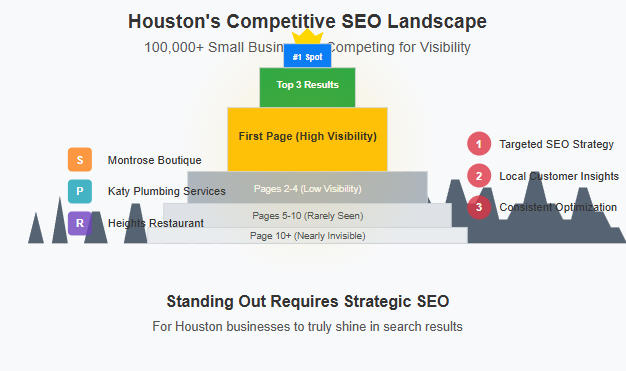
Industry-Specific SEO Trends in Houston: Tailoring Your Approach
The diverse industries that fuel Houston’s economy also bring unique SEO trends:
Real Estate:
The highly competitive Houston real estate market means realtors need to focus on hyper-local content, targeting specific neighbourhoods and property types (e.g., “townhomes for sale in the Heights,” “condos downtown Houston”). High-quality images and virtual tours are also important.
Healthcare
For healthcare providers in Houston, patients often search for services based on proximity. Therefore, optimizing location pages (e.g., “cardiologist near the Texas Medical Centre”), ensuring accurate listings in local healthcare directories, and managing online reputation are essential local SEO tactics.
Restaurants
For the vibrant Houston restaurant scene, visibility in Google Maps, positive online reviews (on platforms like Yelp and Google), and a mobile-friendly website with easy-to-find menus and online ordering options are paramount for attracting local diners.
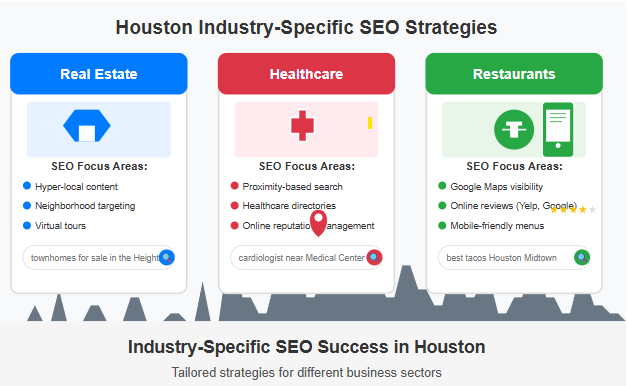
Opportunities to Dominate Niche Local Keywords: Finding Your Untapped Potential
Despite the competition, Houston’s size and diverse neighbourhoods offer significant opportunities to dominate niche local keywords. By targeting specific geographic areas and long-tail keywords (more particular phrases), Houston businesses can often find less competitive but highly relevant search terms.
For example, instead of trying to rank for the broad term “dentist Houston,” a practice might find more success initially by targeting “emergency dentist Midtown Houston” or “affordable family dentist in the Memorial area.” This hyper-local focus can yield highly qualified leads and help smaller businesses compete effectively against larger players.
Key Components of Effective SEO Strategies for Houston Businesses
Now that we’ve covered the fundamentals and the unique landscape of SEO in Houston, let’s get practical. What are the essential building blocks of a successful SEO strategy to help Houston-based businesses thrive online? Here are some crucial components:
Keyword Research Focused on Houston Audiences: Speaking Your Local Customer’s Language
Thorough keyword research is crucial to any successful SEO plan. However, for Houston businesses, this needs a local lens. It’s not enough to target broad industry terms; you need to understand exactly what your potential customers in Houston are searching for. This involves using specialized tools like Google Keyword Planner, Ubersuggest, or Ahrefs to uncover the specific search terms and phrases that locals use.
For example, suppose you offer SEO services, instead of just targeting that generic term. In that case, you’d want to explore more specific and locally relevant keywords like “affordable SEO services in Houston,” “best SEO company Houston TX,” or even neighbourhood-specific terms like “SEO experts in the Galleria area.”
Understanding this local search intent is crucial for attracting the right traffic to your website – the type that’s most likely to convert into customers.
On-Page SEO: Optimizing Your Digital Real Estate for Houston Visibility
Once you know the keywords your Houston audience uses, the next step is to optimize your website. This is where on-page SEO comes in, focusing on elements that you have direct control over:
Title tags and meta descriptions
Title tags and meta descriptions are short pieces of text that appear on search engine results pages (SERPS). Crafting compelling titles and meta descriptions that include relevant Houston-specific keywords (e.g., “[Your Service] in Houston—[Your Business Name]”) can significantly improve your click-through rates and help search engines understand the local relevance of your pages.
Content Localization:
Your website should naturally incorporate location names and references relevant to Houston. If you serve multiple areas within the city, consider creating specific service pages for each (e.g., “[Your Service] in Downtown Houston,” “[Your Service] in West University”). This helps you target those niche local keywords we discussed earlier.
Structured Data (Schema Markup):
This is like providing extra information to search engines about your content in a format they understand. For local SEO, implementing local business schema can help Google display rich snippets in search results, such as your address, phone number, business hours, and even customer ratings, making your listing stand out to Houston searchers.
Off-Page SEO: Building Authority and Trust in the Houston Digital Ecosystem
On-page SEO gets your house in order, but off-page SEO is about building your reputation and authority across the web. Backlinks, or links from other websites to yours, are like votes of confidence. When reputable websites, especially those with a local connection, link to your site, it signals to Google that your content is valuable and trustworthy within the Houston online community.
Aim to get featured in:
- Local Houston blogs that cover your industry or community events.
- Houston-based business directories (we’ll discuss specific ones later).
- Local Houston news outlets, if you have a noteworthy story or expertise to share.
These backlinks from Houston sources drive referral traffic and significantly boost your website’s authority in search engines for local queries.
Technical SEO Essentials for Local Performance: Ensuring a Smooth User Experience
Mobile-Friendliness
A responsive website that adapts seamlessly to different screen sizes is crucial, especially for attracting local Houston customers who often search on their phones. Google prioritizes mobile-friendly websites.
Improve Site Loading Speed
Slow websites frustrate users and can negatively impact your rankings. As Google recommends, aim for a loading speed of under 2.5 seconds to provide your Houston audience a smooth and efficient experience.
Use HTTPS for Security
An SSL certificate (indicated by “HTTPS” in your website address) encrypts the connection between your website and visitors, protecting their data. This is a basic security standard that Google considers a ranking factor.
By focusing on these key components, Houston businesses can build a robust SEO strategy that improves their visibility in local search results and provides a positive and trustworthy experience for their target audience.
Local SEO Best Practices: Your Key to Connecting with Houston Customers
Local SEO presents a significant opportunity for many Houston businesses to connect with nearby customers who are actively searching for their products or services. Here’s how to tailor your approach for the Houston audience:
Optimizing Your Google Business Profile (GBP) for Houston Searches:
Your GBP is your digital storefront on Google. To optimize it for Houston:
NAP Consistency
Make sure your business’s Name, Address, and Phone Number (NAP) are consistent across all internet platforms. Inconsistent data might confuse search engines and customers.
Rich Profile Details
Add high-quality photos of your business, accurate business hours (including any special Houston-specific holiday hours), and a comprehensive, keyword-rich description highlighting what makes your Houston business unique.
Encourage Reviews
Ask satisfied Houston customers to leave reviews on your GBP. Positive reviews significantly boost your visibility and credibility in local search results.
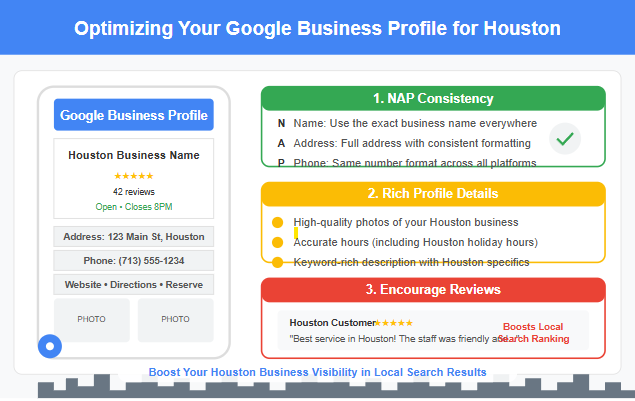
Getting Listed in Houston-Specific Online Directories:
Beyond Google, ensure your business is listed in relevant Houston-focused online directories. These can include:
- Yelp Houston: A popular platform for local business reviews.
- Houston.org: The official website of the Greater Houston Partnership.
- Better Business Bureau (BBB): Enhances trust and credibility.
- Industry-specific directories relevant to your Houston sector.
Consistent listings across these sites improve your local SEO and make it easier for Houstonians to find you.
Generating and Managing Local Reviews:
Reviews are essential for establishing trust and affecting local search rankings.
- Proactively Ask: Politely request reviews from happy Houston customers after a positive experience.
- Respond Thoughtfully: Address all positive and negative reviews professionally and promptly. This shows you value customer feedback.
- Aim for Quantity and Quality: Strive for a consistent stream of genuine reviews. Aim for an initial 10-20 quality reviews to gain noticeable traction in the Houston market.
Using Schema Markup for Local SEO:
Implement local business schema markup on your website’s code. This helps search engines understand key details about your Houston business, such as your name, address, phone number, hours, and even reviews. It allows them to display this information as rich snippets in local search results, making your listing more eye-catching to Houston searchers.
Measuring SEO Success: Metrics and Tools for Businesses in Houston
Tracking your progress is essential for long-term success.
Key Local SEO Metrics to Track (Traffic, Rankings, Conversions)
- Organic traffic: Are more people visiting from search engines?
- Keyword rankings: Are you climbing up the rankings?
- Conversions: Are searchers turning into customers?
Using Google Analytics and Google Search Console Effectively
- Google Analytics: Tracks user behaviour, bounce rate, and conversions.
- Google Search Console: Monitors indexing issues, impressions, and click-through rates.
Tools for Tracking Local Keyword Performance in Houston
- BrightLocal: Great for local ranking reports.
- Moz Local: Helps manage directory listings.
- SEMrush or Ahrefs: are useful for in-depth keyword and backlink analysis.
Conclusion
If you’re a business owner in Houston, mastering SEO can increase your visibility and revenue. While it may seem overwhelming initially, starting with the basics and gradually implementing local strategies can lead to consistent growth.
By focusing on local keyword optimization, creating high-quality content, improving your technical setup, and leveraging platforms like Google Business Profile, you’ll be well-positioned to succeed in Houston’s dynamic market.
And remember: SEO is not a one-time task. It requires ongoing effort, updates, and adaptation—but the results are worth it. Want to dominate the Houston market? Start with SEO.
Frequently Asked Questions (FAQS)
1. What is local SEO, and how is it different from regular SEO in Houston?
Local SEO optimizes your business for searches in a specific geographic area, like Houston. Unlike general SEO, it includes map listings, location-based keywords, and local reviews, which target broader audiences.
2. How long does it take to see SEO results in Houston?
SEO is a long-term strategy. Most Houston businesses begin seeing noticeable improvements in 3 to 6 months, depending on competition, keyword difficulty, and the quality of SEO work done.
3. Is SEO truly vital for small businesses in Houston?
Yes. With thousands of local businesses competing online, SEO helps smaller companies gain visibility, attract local customers, and effectively compete with larger brands.
4. What are the best tools for tracking local SEO in Houston?
Some top tools include Google Analytics, Google Search Console, BrightLocal, and SEMrush. These help monitor rankings, traffic, and local performance.
5. How much does SEO cost in Houston?
SEO costs vary based on scope and competition. Small businesses might spend $500–$1,500 monthly, while larger or more competitive campaigns can go higher.












